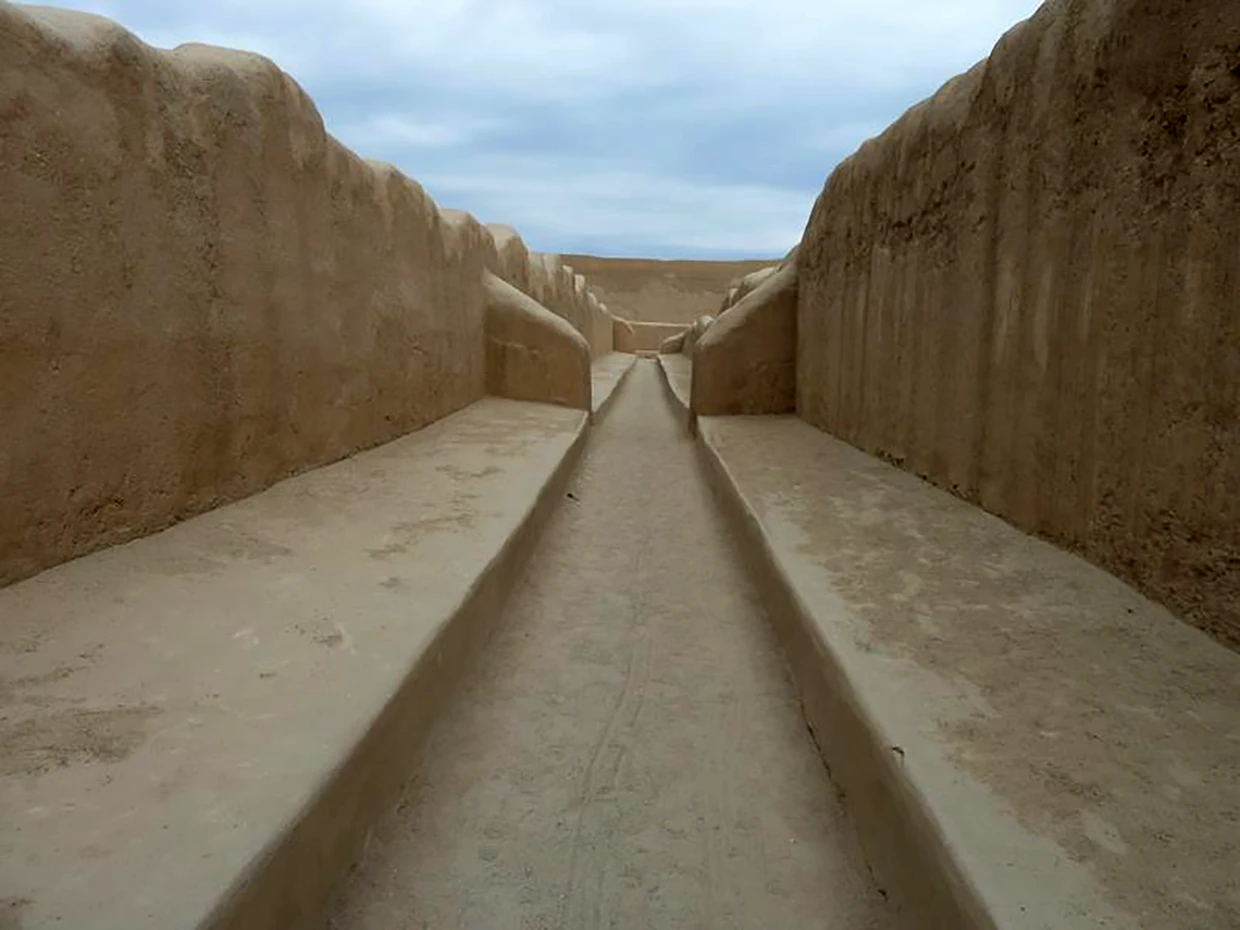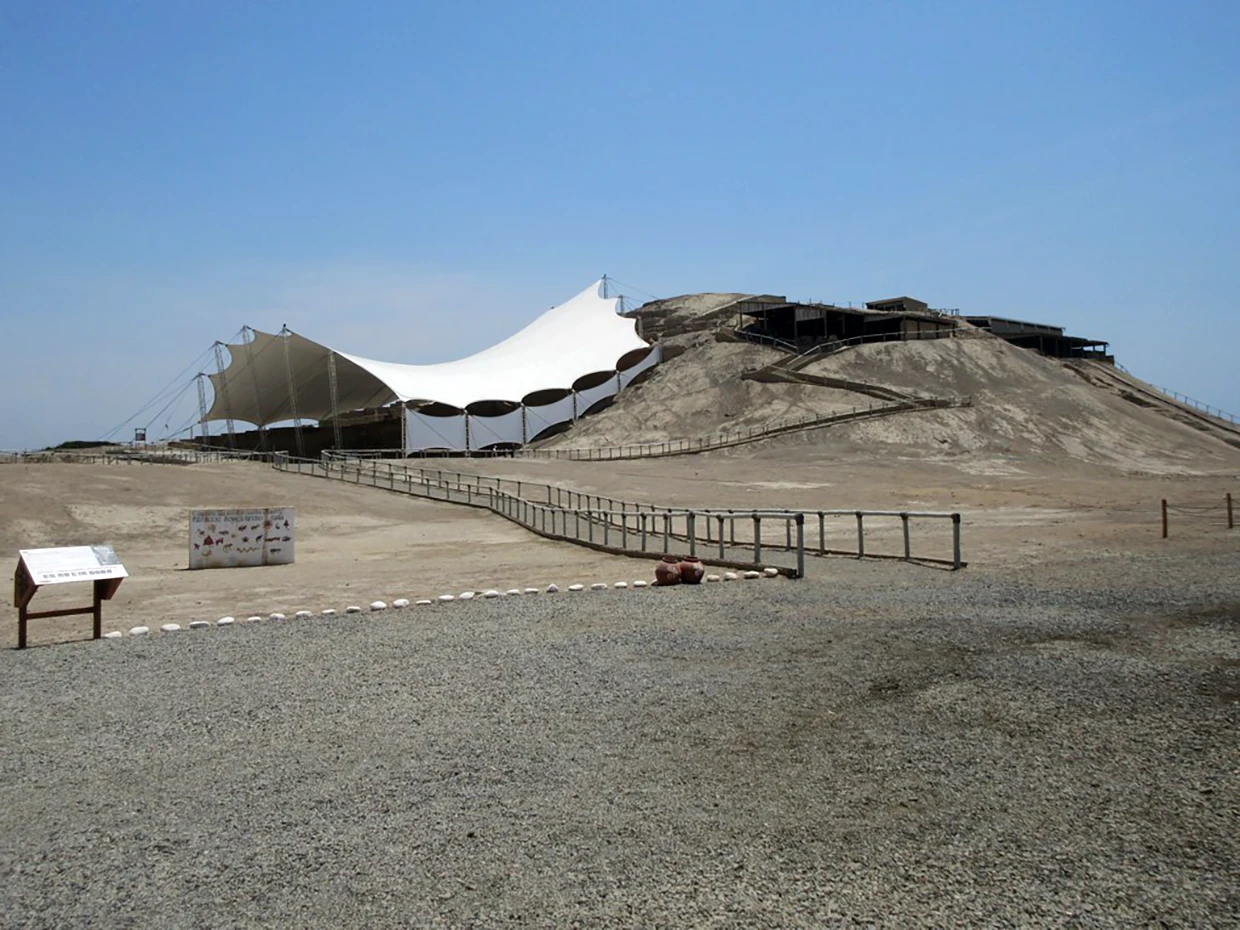Chan Chan is an ancient pre-Columbian city built by the Chimú culture. This amazing archaeological site is located near the Peruvian city of Trujillo in the La Libertad region.
Chan Chan Archaeological Complex
Its name means Splendor Sun and it is a pre-Columbian city built by the Chimúes. It is considered the largest adobe city (unbaked bricks, made from a mass of mud) in America. In its splendor, it covered around 20 square km and is believed to have had a population of more than 40,000 people, being the center of a vast network of trade and tribute.
Chan Chan is a surprising archaeological site because it is actually a set of ten citadels, each dedicated to a ruler of the dynasty. The walls of the buildings, which, as we said, are made of adobe bricks, were decorated with clay reliefs, with floral, zoomorphic or mythological motifs, many of which can still be seen.
Each of the ten citadels contains temples, homes, warehouses, cemeteries, gardens and cisterns.
Chan Chan Site Museum
Before exploring the archaeological site, it is advisable to visit its museum, where you can learn about Chimú history and culture. Artifacts found at the site are displayed here. If you want more information, the museum has its official website.
The Royal Citadel Nik An
The Nik An citadel (you will also find it as the Tschudi palace) is located in the center of the archaeological complex of Chan Chan, between the Chayhuac and Chol An citadels. The enclosure consisted of large ceremonial and residential spaces, audience halls, warehouses and the ruler’s tomb. It had a single entrance door and high walls of up to twelve meters, for better defense. All made of adobe and decorated with beautiful reliefs.
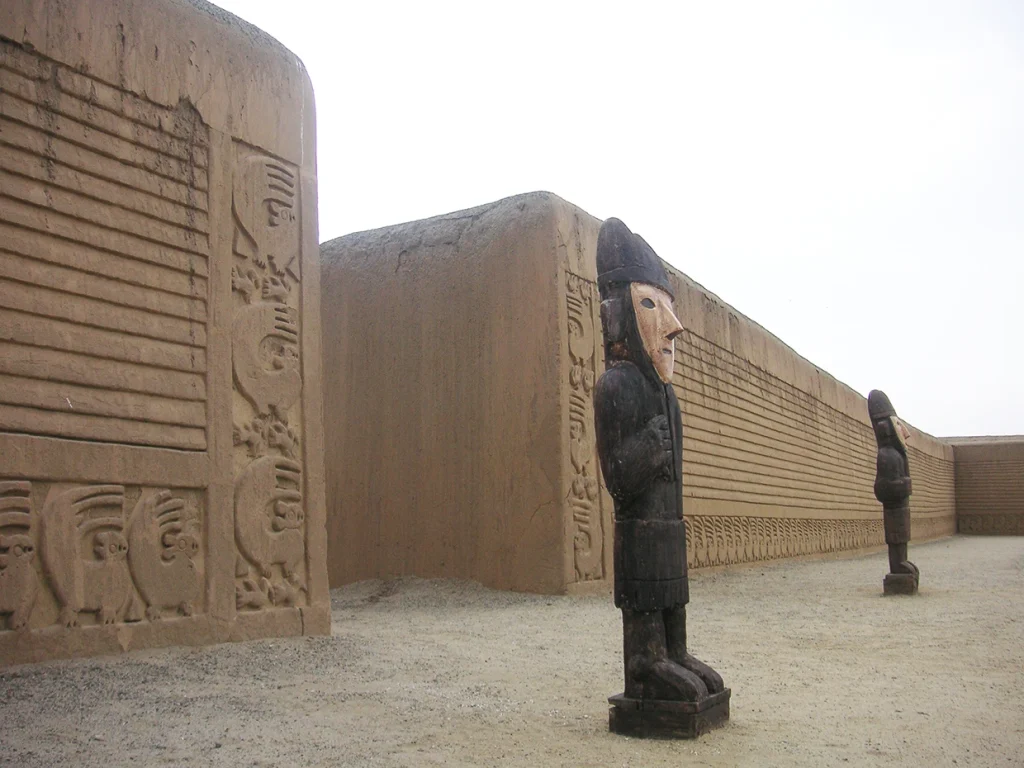
Ceremonial Reservoir of Chan Chan
It is one of the most interesting structures in the Chan Chan archaeological complex—also known as Huachaque—and stands out for its hydraulic and ritual functions.
It is located in the central area of the walled Nik An complex (formerly called Tschudi), one of the most important palaces in the city.
It was a large water reservoir, probably supplied by canals or underground seepage, whose purpose was to store fresh water—vital for a city built in a desert environment. It is also believed that it may have been used for cultivating aquatic plants or for keeping aquatic animals such as fish or birds, taking advantage of the ecosystem it created.
Water held symbolic and ritual importance in the Chimú worldview. It is common to see high reliefs depicting fish, oriented toward the north and south (which may symbolize the two currents marking the Peruvian coast: the cold Humboldt current from the south and the warm El Niño current from the north), as well as waves, fishing nets, pelicans, and anzumitos (a blend of sea lion and otter).
From an architectural standpoint, it has a rectangular shape and is surrounded by an adobe wall. It includes staircases descending to the bottom of the reservoir. The presence of nearby wall decorations (featuring fish, birds, and waves) reinforces its connection to water and the sea.
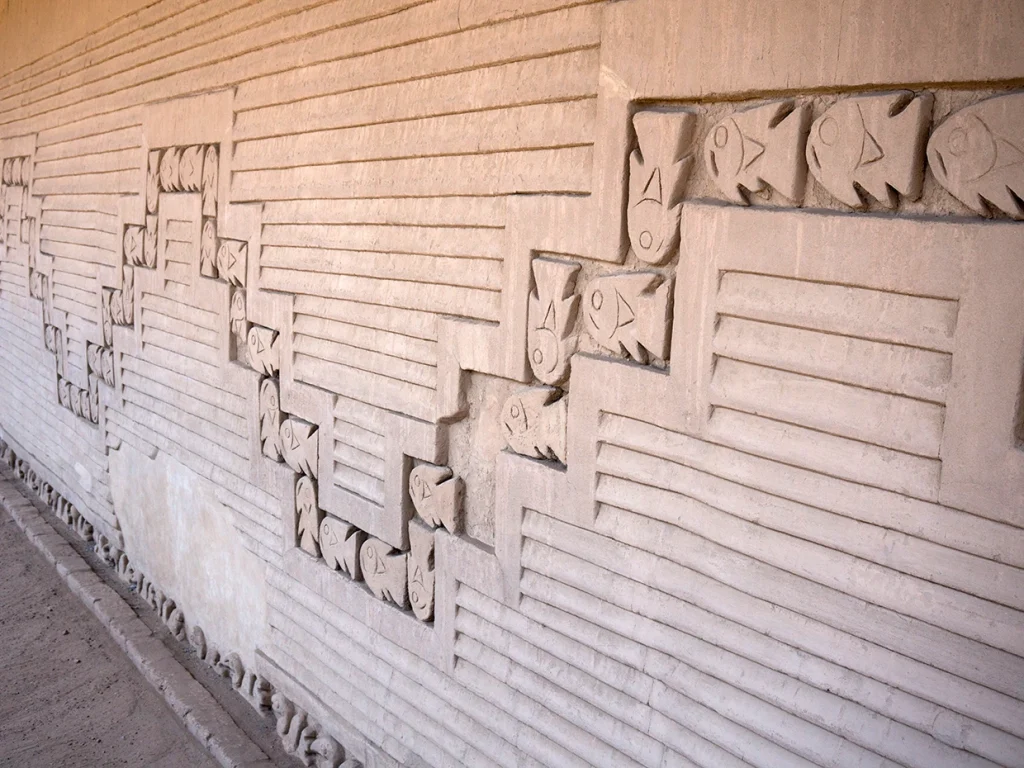
The courtrooms
Chan Chan is a surprising archaeological site also for constructions such as these rooms that, seen from above, have a “U” shape and are believed to have housed officials or figures linked to the most important administrative functions of the city.
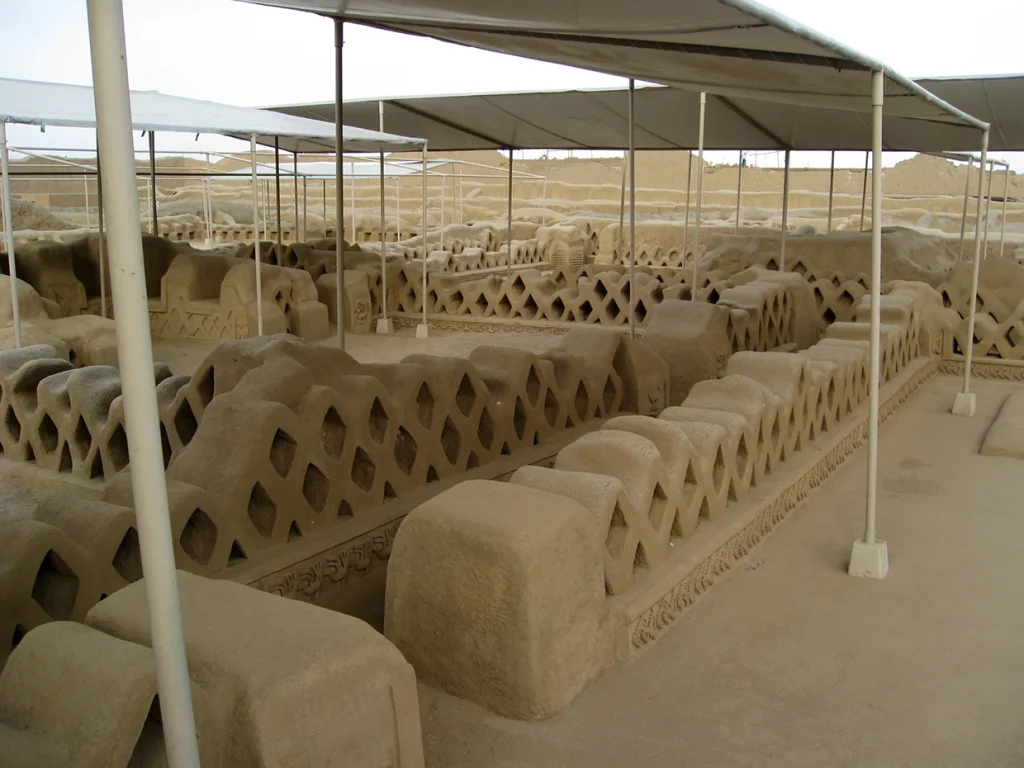
Funerary Platform and Burial Area
This is where the Chimú king was interned, accompanied by offerings, ceramic vessels, and—in some cases—human sacrifices. The funerary platforms, found in nine of the ten major enclosed palaces (ciudadelas), consisted of a main T‑shaped chamber surrounded by multiple side cells. Although many have been looted, excavations (e.g., at Laberinto compound) uncovered dozens of interments—primarily adolescent females likely sacrificed to accompany the deceased ruler—along with richly buried offerings thehistoryblog.com+6ehrafarchaeology.yale.edu+6scribd.com+6.
Located in the southern sector of the palace complex, this sacred area lies near the ceremonial huachaque.
Chan Chan Viewpoint
Since late 2024, a modern viewing platform has been inaugurated at the northern annex of the site. This viewpoint, along with an information kiosk, rest area, plazas, and interpretive signage, was designed to enhance the visitor experience and offer a broad panoramic view of the archaeological site peru.reportnews.la+5swissinfo.ch+5ytuqueplanes.com+5.
The structure of the viewpoint has been designed using metal and wood, in harmony with Chan Chan’s adobe environment. Its elevation allows visitors to appreciate the architectural complexity of the site from above, making it easier to fully read the walls, plazas, and marine reliefs that are not visible from ground level apnoticia
WHY NOT VISIT…?

A relatively short distance away are other archaeological sites of interest such as the Huacas del Sol y de la Luna and the Huaca El Brujo.
FAQs

How can I get to Chan Chan?
From Lima by bus it is between 10 to 12 hours of travel.
From Trujillo, by bus or taxi in the direction of Huanchaco. The trip takes about 15 minutes.

You can visit the site on your own by paying the entrance fee but we recommend hiring a local guide to get a more enriching experience and better understand the historical and cultural importance of this incredible archaeological site.


